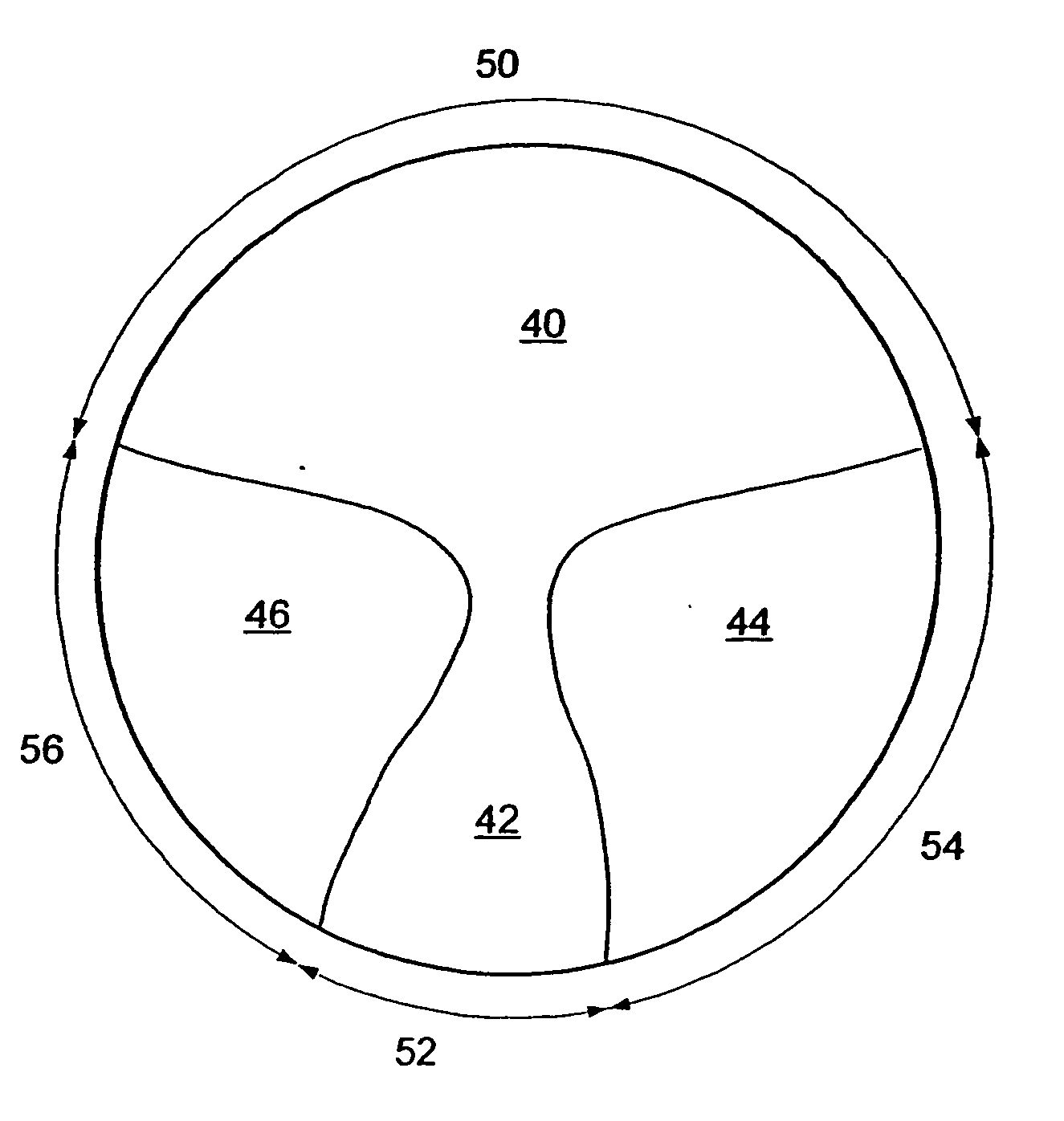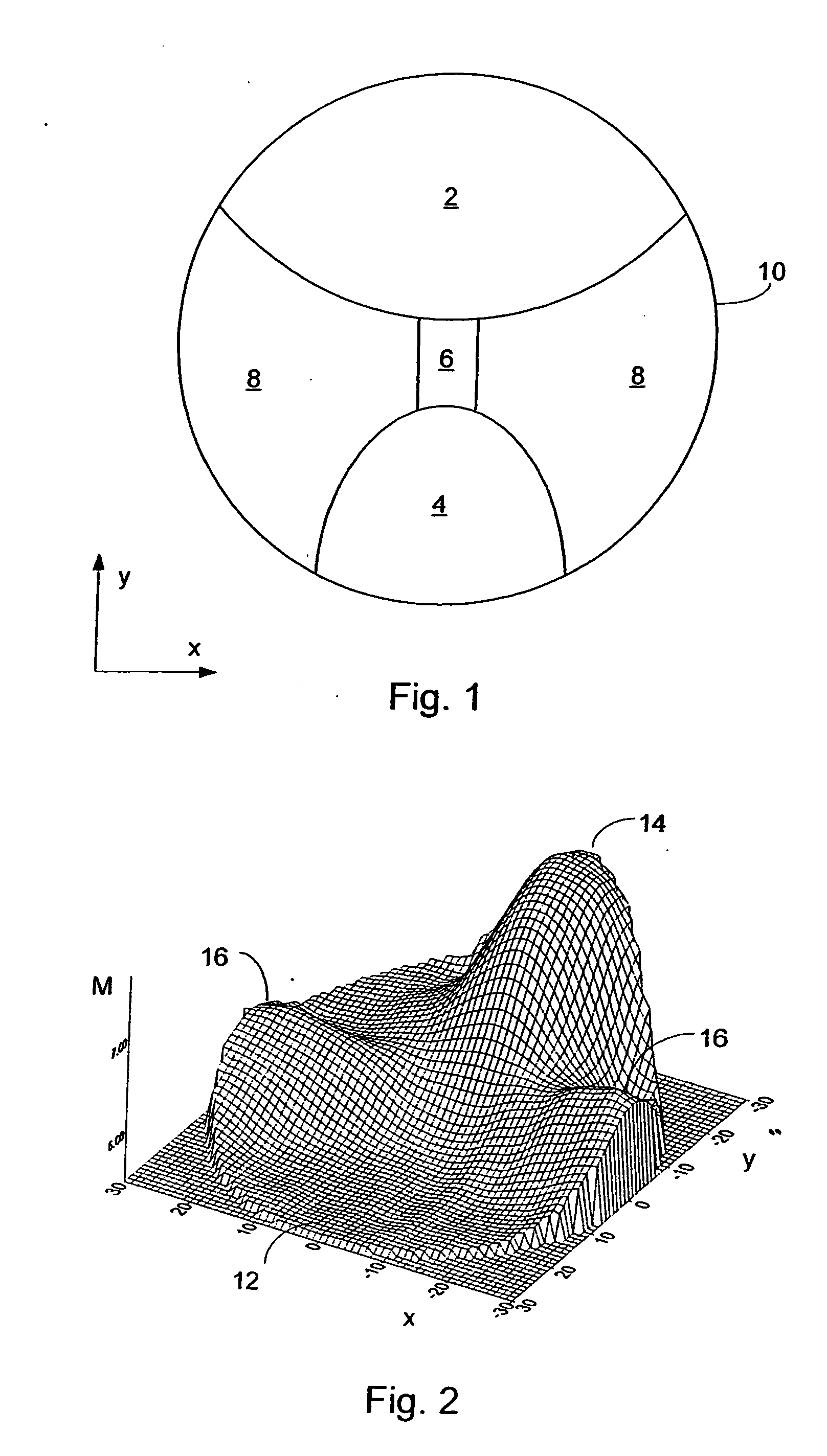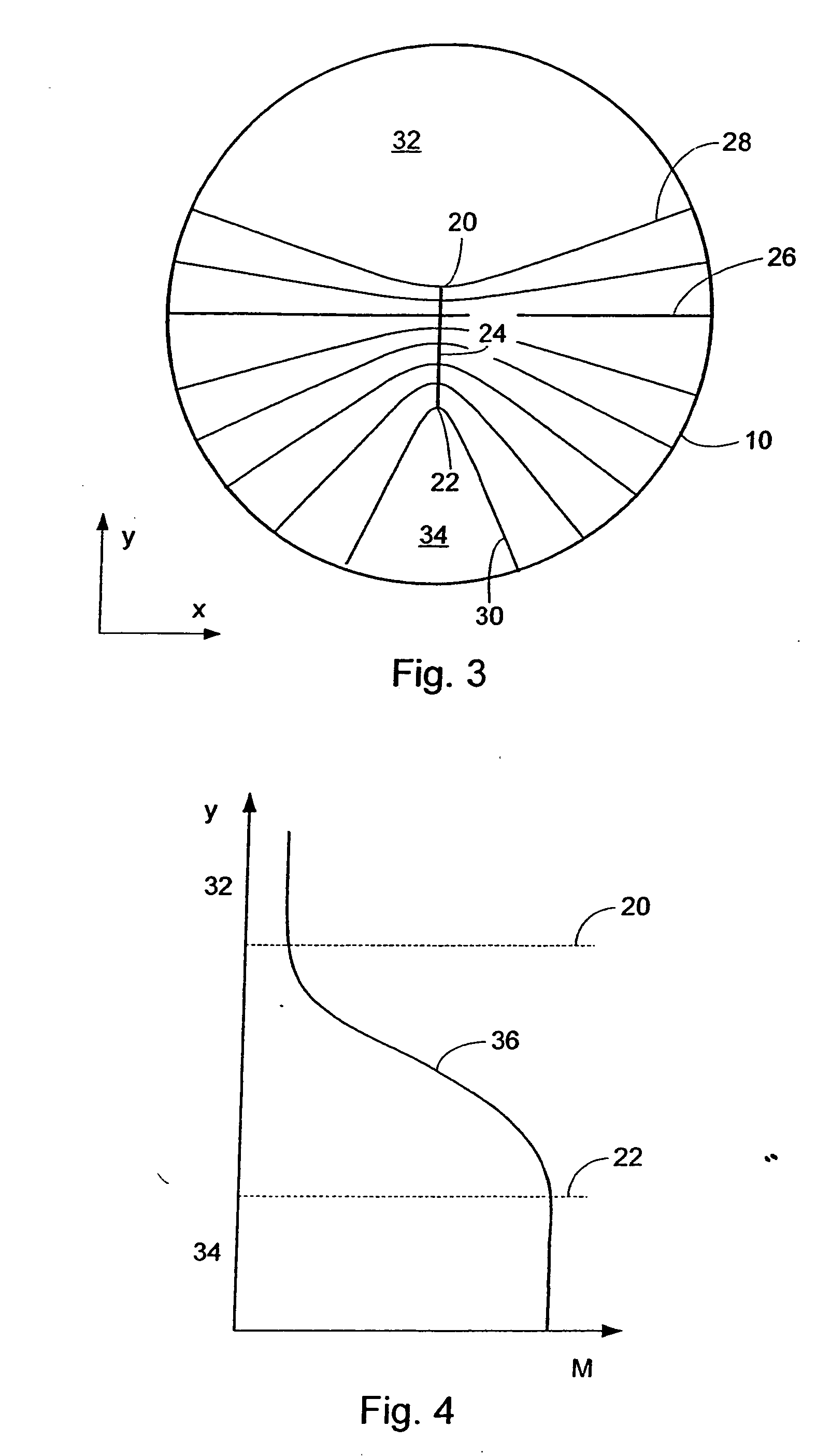Progressive addition power lens
a technology of ophthalmic lenses and power, applied in the field of progressive addition power ophthalmic lenses, can solve the problems of unstable numerically based prior art process of varying surface shape to achieve desired optical properties, and the inability of previous design processes to generate lens designs quickly enough, so as to maximize the effective usable area of the lens
- Summary
- Abstract
- Description
- Claims
- Application Information
AI Technical Summary
Benefits of technology
Problems solved by technology
Method used
Image
Examples
Embodiment Construction
Certain embodiments of the invention will now be described, by way of example only, to illustrate the subject matter of the invention. The surface of a lens may be described by the equation z=f(x, y), where x, y, and z are rectangular Cartesian co-ordinates.
For brevity let ∂x≡∂∂x;∂y≡∂∂y;∂x2≡∂2∂x2;∂y2≡∂2∂y2;and ∂xy2≡∂2∂x∂y.
The principal radii of curvature R1 and R2 of the surface are the roots of the quadratic equation:
┐rt−s2┘R2+h┐2pqs−(1+p2)t−(1+q2)r┘R+h4=0 (1)
where p≡∂xz, q≡∂yz, r≡∂x2z, s≡∂sy2z, t≡∂y2z, and h≡{square root}{square root over ((1+p2+q2))}. See, e.g., I. N. Bronshtein & K. A. Semendyayev, “A Guide Book to Mathematics,” Verlag Harri Deutsch, 1971, hereby incorporated by reference in its entirety.
The principal values of curvature are 1 / R1 and 1 / R2 respectively. The principal curvature difference 〈δ〉≡1R1-1R2
is related to the optical property of astigmatism (also known as cylinder power) by D=1000(n−1)<δ> where D is measured in diopters, n is the r...
PUM
 Login to View More
Login to View More Abstract
Description
Claims
Application Information
 Login to View More
Login to View More - R&D
- Intellectual Property
- Life Sciences
- Materials
- Tech Scout
- Unparalleled Data Quality
- Higher Quality Content
- 60% Fewer Hallucinations
Browse by: Latest US Patents, China's latest patents, Technical Efficacy Thesaurus, Application Domain, Technology Topic, Popular Technical Reports.
© 2025 PatSnap. All rights reserved.Legal|Privacy policy|Modern Slavery Act Transparency Statement|Sitemap|About US| Contact US: help@patsnap.com



